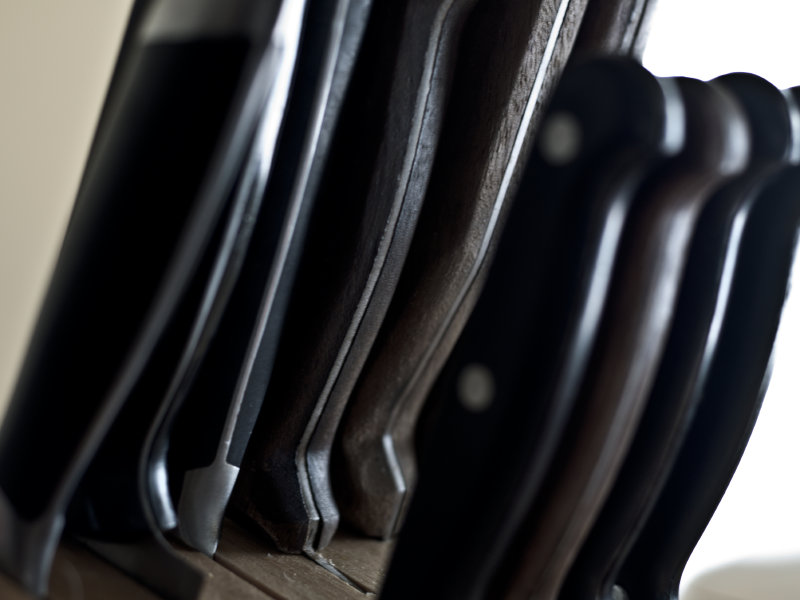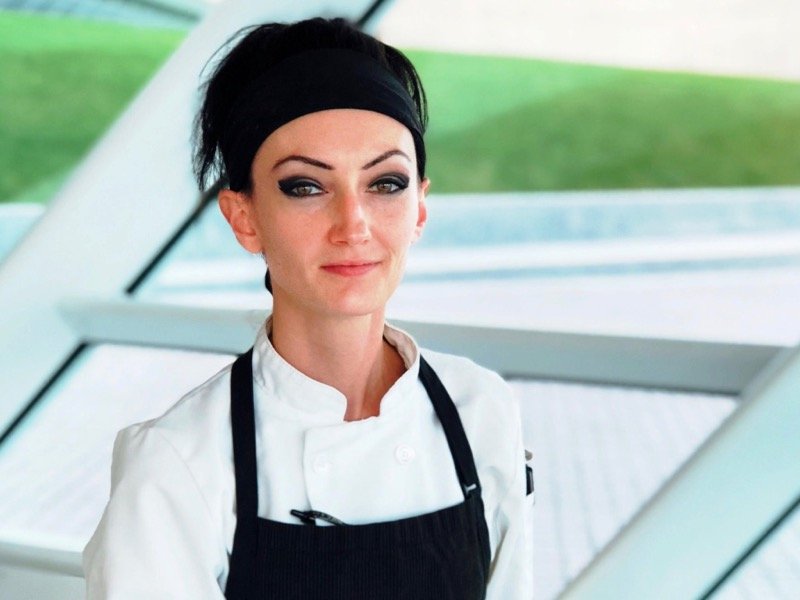For the sixth straight year, October is Dining Month on OnMilwaukee.com, presented by Concordia University. All month, we're stuffed with restaurant reviews, delectable features, chef profiles and unique articles on everything food, as well as the winners of our "Best of Dining 2012."
In a classroom kitchen at the Le Cordon Bleu College of Culinary Arts, inauspiciously nestled in the bosom of a – then, still erect – Cabrini Green housing project (most infamously known for its portrayal in "The Candyman"), stood 25 aspiring young chefs looking on as instructor Jim McGuiness prepared to demonstrate the proper technique for breaking down a live lobster.
None of us knew what was about to go down. What we did know was that Chef Jim was quiet and unassuming. He commanded the attention of the class – not by slamming pots and pans or by barking insults and dressing-down the sheepish lambs among us, but by speaking soft and slow without making any sudden or jarring movements.
His willowy demeanor made him all the more terrifying, like a bow-legged scorpion waiting with excruciating patience for the moment that you stop paying attention. For this reason, we worked with a defensive posture, never letting him out of our sight as he lurked throughout the room dispensing shiveringly cold critiques upon our pedestrian efforts. Once, after I had successfully cooked a noisette of salmon to a perfect medium after repeated failed attempts, he approached me with a fork, cut into it and savored the bite – then took a half step back from the table and, without speaking a word, began slowly, almost sarcastically, clapping his hands.
Weeks into the program, having learned to break down a chicken, a veal leg and a whole fish, we congregated around a large white cutting board that lay six inches from Chef Jim's belt buckle. It was bookended by his hairy and eerily still forearms as a wet, blissfully ignorant lobster sat between them stirring.
While stoically explaining the anatomical make-up of mollusks and crustaceans, he gripped the creature – now beginning to writhe – mid-sentence, and with a fatal twist and crack, ripped the lobster in two. From there, he quickly removed the legs from the tail and the claws from the body. Within less than 20 seconds, he had unflinchingly dismantled a once-living being and now stood implicit, unaffected by the limbs and torso still twitching in front of him from post rigor mortis impulses.
The horror seeped through the small gathered crowd as tears welled up in the eyes of the class's lone vegetarian. Mouths were either agape or being clutched by stiff hands in an effort to silence their shrieks. As the gravity of the moment permeated the assembled group of aspiring Food Network stars – faced with the reality that cooking involved making living things dead – Chef Jim panned the room poised, as his previously expressionless glare morphed slowly into a sinister grin. Almost as if to say, "Welcome to food service my little piglets."
He removed the meat from the shell, surgically extracting the tomalley (the green pinky-sized liver and kidney organs) and set them aside for a béchamel. He snarled as he proceeded, almost on the verge of giggles like a kid nuking ants with a magnifying glass. Once the meat, the shells and the vital organs were separated into meticulous piles, it was time to cook. Chef Jim gracefully brought together a simple dish of linguine with poached lobster in brown butter and tossed it in a green-tinted lobster cream sauce. It was transporting.
But Chef Jim was not out of the ordinary. To the contrary, he was the standard – the sort of egomaniacal fellow who I have encountered many facsimiles of over the years. After all, in order to arrive at the eventual charm of a delectable plate of food, a chef often requires a strong stomach, a steady hand, decisive movements and careful clean-up. Making our company all the more menacing, we often live on vampire's hours, stalking the night after a full day of dragging intimidatingly large cleavers through raw flesh, with our eyes bulging. Socially excommunicated on account of our bloodless complexions and a radiant odor of death, we skulk on the fringe of society.
While professionally bent nine-to-fivers kick back to drink and eat in the aura of the electric metropolitan night, celebrating a holiday or a life accomplishment or socializing with friends and strangers behind masks of perfume or aftershave and wearing silk shirts and cocktail dresses, we toil behind the scenes under the flickering fluorescent lights of Kitchen Anywhere, USA. For this reason (as professional foodsmiths across the world have already told you in their books and magazine exposes), many chefs revile those they are privileged to serve.
We believe that the world outside does not understand the exquisite pain in which we live, so much so that some of us may only be one entitled diner's snarky comment away from a reactionary act of murder. "Tonight's Special: Cabernet-Braised Leg of Douchebag Who Thinks the World Owes Him Something with a Side of Chanterelle Mushrooms, Glazed Turnips and Lemon-Toasted Wild Rice."
Chefs are certain kinds of people. Often demonstrative. Usually creative. Always self-centered. These qualities are virtually essential to success in a professional kitchen, and when all added together, equal an unteachable quality that we call leadership. Leadership, in its most under-analyzed form, is the desire to be in control and the ability to persuade otherwise uncertain individuals to go along with you – traits that seem equally assimilated in the world's most prolific killers.
I once watched a documentary that dissected the psychology and personality of John Wayne Gacy and afterwards I thought to myself, "He would've made a terrific chef." In fact, he was a chef. He was lauded as one of the best cooks to ever don a paper hat at the Menard Correctional Center up until the day he was unceremoniously executed by lethal injection.
Some chefs are charming, engaging and persuasive, like Bundy, Gacy or BTK. Others are coy, reserved and cerebral, like Dahmer, Ridgeway or Chikatilo. And of course, some chefs are plain and simply psychotic, like Manson.
Whatever archetype a particular chef might fall into, we all have one thing in common. We love food; and we'll kill for it.
Justin has been featured in such notable publications as Food Service Director, Today's Dietician and the ACF's National Culinary Review. Most recently, Justin was the executive chef at Milwaukee's renowned art deco hotel, Hotel Metro. Today, Justin enjoys writing and demonstrating at community events and festivals, also making regular appearances on WISN 12's Saturday morning news. Justin plans to return to restaurants some day but is not sure when or where. In the meantime, he enjoys spending time with his wife and three boys.







